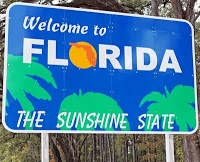Monthly Archives: September 2011
Prepping for a Homecoming: Communication
September 26, 2011
Here are some tips on exactly what to discuss when prepping for homecoming:
Communicate with other parents; then, talk to your teen about their friends’ parents. Being part of a social group does not guarantee that other parents share the idea of a zero-tolerance policy for alcohol. Some parents even choose to “look the other way” when hosting teen get-togethers, reasoning that at least, the teens are in a “safe” environment. This is illegal in any state. Communicate with these other parents to find out if they know where their teens will be after homecoming night. Even better, if the teens plan to spend time in another teen’s home, find out if the parents are willing to chaperone. Communicate the importance of accounting and locking up alcohol in their homes. When communicating with your teen, make sure that they know that it’s always alright to say “no.” Ask if they will be riding with teens whose parents also have a zero-tolerance policy for alcohol.
Come up with a safety code. This could be something a teen may text their parent if they are in an uncomfortable situation, and they need an exit. Something like a code to signal, “Get me out of here!” On your end, make sure that your teen knows that you will be discrete upon receiving this code. This could also be something that a teen can do to “check in” with their parents. Maybe texting something like, “dinner was awesome!” could mean that the teen has arrived at an after-homecoming destination safely.
Discuss the teen’s planned itinerary for the evening, and require the teen to inform you of any changes. Make teens feel they could trust you not to bug them on homecoming night, if they promise to keep their end of the bargain by checking in and informing you of any changes in the plan.
Doing so will hopefully make homecoming night a “night to remember,” instead of being “the night when my mom bugged me all night, until I got home.” Pre-plan, communicate and have fun!

The Best And Worst Cities For Driving In Florida
September 13, 2011
Allstate Insurance Company released their annual report on the best and worst cities in which to drive. The study looked at Allstate collision claims and compared them to the national average and ranked the nation’s cities by population. To prevent any type of special event such as floods and hurricanes from skewing the results, the Allstate actuaries analyzed figures over a two year period to reach their results.
The list shows a driver’s likelihood to be involved in a collision and the average number of years a driver in that city can expect to go between collisions. Based on their results:
The top five safest cities in Florida for drivers, in terms of ranking, are:
1. Port Saint Lucie – A driver in Port Saint Lucie can expect to go 11.2 years between collisions and the chances for being involved in a collision are 10.4 percent less than the national average. Port Saint Lucie was ranked number 24 overall in the national list of safest cities in America.
2. Cape Coral – A driver in Cape Coral can expect to go 10.5 years between collisions and the chances for being involved in a collision are 4.8 percent less than the national average. Cape Coral was ranked number 42 overall in the national list of safest cities in America.
3. Tallahassee – A driver in Tallahassee can expect to go 9.8 years between collisions and the chances for being involved in a collision are 1.9 percent more than the national average. Tallahassee was ranked number 66 overall in the national list of safest cities in America.
4. Jacksonville – A driver in Jacksonville can expect to go 9.7 years between collisions and the chances for being involved in a collision are 3.1 percent more than the national average. Jacksonville was ranked number 73 overall in the national list of safest cities in America.
5. St. Petersburg – A driver in St. Petersburg can expect to go 9.7 years between collisions and the chances for being involved in a collision are 3.3 percent more than the national average. St. Petersburg was ranked number 74 overall in the national list of safest cities in America.
The top five most dangerous cities in Florida for drivers, in terms of ranking, are:
1. Hialeah – A driver in Hialeah can expect only 6.6 years between collisions and the chances for being involved in a collision are 52.5 percent more than the national average. Hialeah was ranked number 183 overall in the national list of safest cities in America.
2. Miami – A driver in Miami can expect only 7.0 years between collisions and the chances for being involved in a collision are 43.1 percent more than the national average. Miami was ranked number 178 overall in the national list of safest cities in America.
3. Tampa – A driver in Tampa can expect only 7.1 years between collisions and the chances for being involved in a collision are 41.7 percent more than the national average. Tampa was ranked number 176 overall in the national list of safest cities in America.
4. Hollywood – A driver in Hollywood can expect only 7.8 years between collisions and the chances for being involved in a collision are 28.2 percent more than the national average. Hollywood was ranked number 154 overall in the national list of safest cities in America.
5. Orlando – A driver in Orlando can expect only 8.0 years between collisions and the chances for being involved in a collision are 25.5 percent more than the national average. Orlando was ranked number 149 overall in the national list of safest cities in America.
The complete Allstate report can be seen at: http://allstatenewsroom.com/releases/00c90674-c797-4dd0-82c8-3813ccbe1e1e:en-US/download/e3fc06ab-a016-4248-89ef-72454729bd0a
